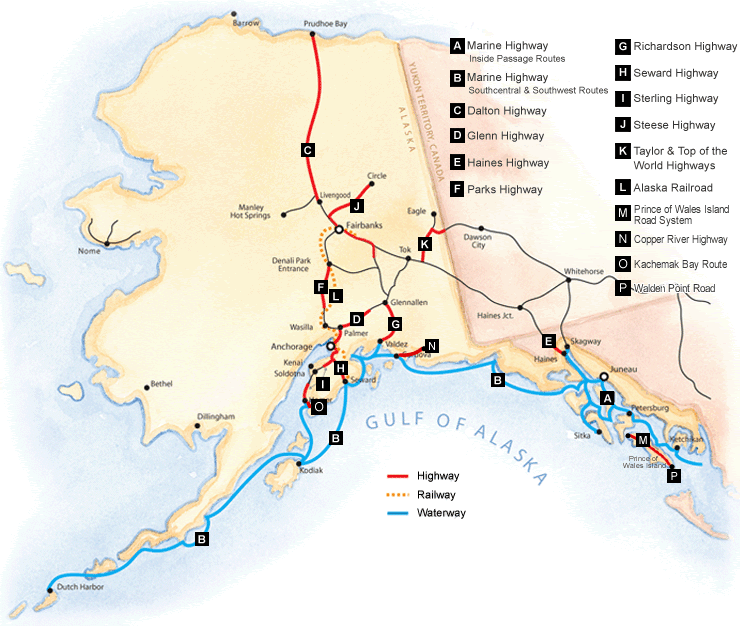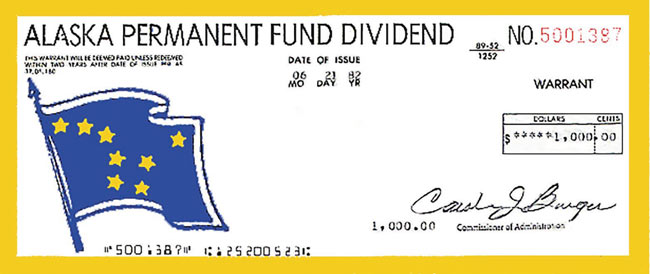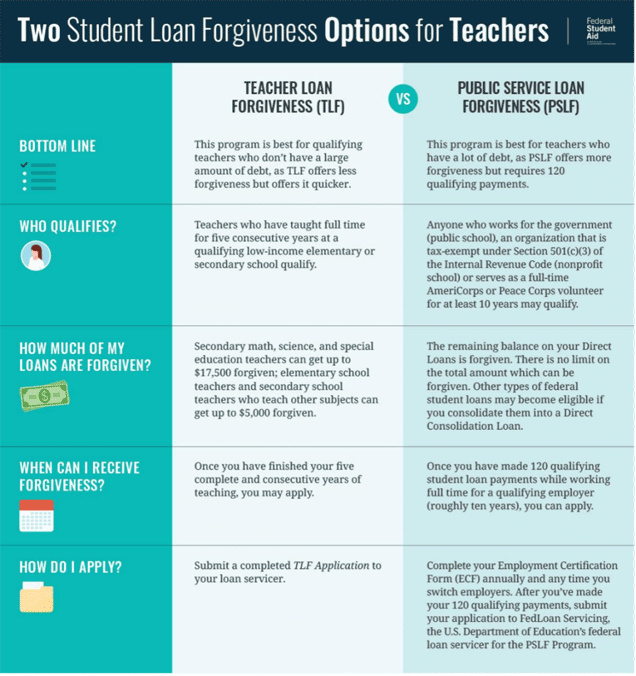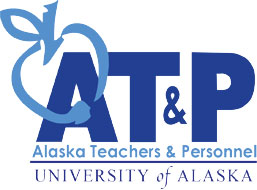

Teaching in Alaska
This section of our site is intended to answer
questions potential job seekers in Alaska are likely to ask.
And you should be asking questions. Working as a teacher in
Alaska – particularly rural and remote Alaska – is nothing
like teaching in the Lower 48. It can be incredibly
rewarding.
Alaska has opportunities, and challenges you
won't find elsewhere. It is important to be an educated job
candidate if you are going to find a good match for both
your professional skills and interests, and your personal
lifestyle requirements.
Not (Necessarily) Your Average Teaching Job!
Alaska offers a wide variety of different
professional settings. Teachers tend to move around a bit in
my experience.
Urban / Road System Settings
Teaching in the more urban, and road system
connected school districts in Alaska is much like working
anywhere in, say, the Pacific Northwest, but with arguably
better scenery and outdoor recreation access! Think "Moab
meets Portland".
There is a great "small town" quality of life,
even in our largest cities. In these areas, well
resourced schools, a variety of after school activities
similar to Lower 48 locations, such as football and swim
teams, and school buses for the kids. There are also state
and city maintained roads, supermarkets, movie theaters,
dentists and doctors, ice rinks, and local television
stations. A residential housing market exists. World
class fishing abounds, hunting, snowmobiling, cross country
skiing, climbing and hiking are all readily accessible.
Alaskans are active outdoors year-round. There is even
access to surprisingly great downhill skiing from several
Southcentral communities, and a couple in Southeast.
Rural / Remote Village Settings
Teaching in much of rural Alaska, however, is still, in
2022, a true adventure. Hundreds of educators in the last
two decades have traded all the comforts and normal routines
they are used to for the chance to live and work in rural
Alaska. They have moved to some of the last traditional
Alaska Native communities in North America, where
subsistence hunting and fishing, or commercial fishing
villages, or remote logging camps. They have
built meaningful relationships with students, and community
members. In many cases, they have had more
professional autonomy, in-service training, cross-cultural
opportunities than any Lower 48 education career would have
offered them. Finally, wherever you go in rural Alaska, the
outdoor recreation, and wildlife viewing opportunities
statewide are really off the charts.
Many of these educators originally came for a
year or two, but ended up staying for a decade, or even the
balance of their careers. Others do come for just a few
years of the experience, and then go on to other endeavors
with lasting memories of their Alaska adventure.
Teachers, and "teaching couples" in rural Alaska tend to move from site-to-site within a district every few years, or move to other districts. Teaching in the Bush is a very portable profession in a high demand niche. Teachers in the urban districts tend to have more typical career paths with longer stretches in a building, or even in a class or grade level.
The rural teaching lifestyle in Alaska is not
for everyone, though, and so we focus on that more than
urban settings. ATP wants you to know both the potential
rewards, as well some of the challenges. Check our Featured
Bush Educators page for links to teacher blogs and
books about their lifestyle and work life in rural Alaska.
Be an Informed Job Candidate
In addition to this general overview page, we strongly encourage you to use the resources on this website to research in more detail the school districts, and village locations around the state before applying for a position. There are wide differences in settings, so do your homework!
- Learn from our About Alaska page what the state is like
- Study the areas on the Five
Regions of Alaska page
- Get to know Alaska school districts
- Research rural and remote village locations
- If you are foreign national, also visit our J-1
candidate page
Not only will districts be impressed when you
demonstrate your knowledge about them, they will realize
that you are a serious, informed candidate. School districts
really do want people working for them in their schools and
villages by choice, not by accident.
The ATP Applitrack Job Bank system allows you
to upload your resume information in a detailed profile, and
upload supporting documents, such as letters of
introduction. It gives you the ability to convince districts
that you know about their needs and setting, as well as what
sort of living and working arrangements you are
seeking.
Two Distinct Alaskas Exist
There are really two different worlds you need to understand when thinking about living and teaching in Alaska: urban and rural. The differences are striking.
Living or working in the urban areas of Alaska is much like anywhere else in the Lower 48 – but with better scenery and fishing! Urban in Alaska isn't "urban" like major cities in the Lower 48, either. Even Anchorage, Alaska's largest urban area, would just be a small city in comparison with most cities you've been to in your experiences in most US states. Juneau, in fact, would be considered a small town.
Sure, you may have to plug your engine block heater in up in Fairbanks to keep the car from locking up in winter, and you have to learn to drive on snow-covered roads. But, you still perform most of your day-to-day tasks the same way as you always have.
Your job search for Alaska's urban settings
will be much like a search with any school district in the
Lower 48. If are looking at for a position in Anchorage,
Mat-Su, Fairbanks, Juneau or Kenai Peninsula areas, you
don't really need to do things much differently in terms of
your search strategy. All of these districts have fairly
specific hiring procedures, and although your job search
here will link to their openings, you really need to also go
to their own Applitrack websites, and follow their
guidelines for applying. Download our Big Six
Explainer document here:
- Alaska
's
Big Six Districts - How ATP & and the districts
with their own Applitrack sites differ
Cover all your bases with applying to Alaska's
urban districts, but realize that compared to rural
districts, their application process often has very specific
procedures that must be followed closely. Use ATP's
Applitrack searches, but make sure you know what other
requirements exist for jobs posted by the Big Six
districts.
Teaching in the Bush
The vast majority of Alaska not connected to
the existing road system – the Bush – is a hugely different
thing. There is much more on this topic on the About
Alaska page.
In short, the only areas with any connection
to the major road system in North America are in the
Southcentral and Interior regions of the state. Two
highway connections cross over the border from Canada, and
communities around Fairbanks and down toward Anchorage and
the Kenai Peninsula are "on the Road System". The Alaska
Marine Highway (ferry) system connects communities in
Southeast Alaska all year, and along the Gulf Coast and
Alaska Peninsula only seasonally in the warmer months.
On this map, the red lines are mostly two-lane
blacktop "highways". The "C" road is the "haul road"
to the North Slope oil fields. There are unpaved roads that
link up to smaller communities along these areas, but other
than in towns, these are the only roads in the state. The
vast majority of Alaska is fly-in only, or "in the
Bush". There are some self-contained, mostly unpaved
road networks in a few remote communities like Nome, or on
several of the main islands.

Info Nugget: Just like
rural Australia, New Zealand, and parts of Africa, the
remote places in Alaska are collectively referred to as "the
Bush". In our case, the definition hinges on transportation
access.
Technically, demographers don't really have a word that adequately describes our diverse and scattered collection of over 250 small villages, towns and remote outposts. See our About Alaska page for more details about our "Last Frontier" setting.
Alaska statutes define "rural" as meaning a community with a population of 5500 or less, and not connected by road or rail to Anchorage or Fairbanks, or with a population of 1,500 or less and still connected by road or rail (AS 14.43.600-14.43.700). The vast majority of the state of Alaska meets this definition. There are other definitions.
A study done by the Regional Education Laboratory at Education Northwest a few years ago found that about 64% of Alaska's districts, 53% of its schools, and 40% of its population are in the Bush (REL Northwest). McDiarmid and others have found that the majority of jobs for teachers new to Alaska are found in Bush settings. Teachers leaving Bush schools frequently are headed to road system districts. Therefore, if you are coming up from the Lower 48, it is not unreasonable to expect that you may begin your Alaskan career in rural Alaska.
Although statistically speaking, rural school districts lose more teachers in a typical year, this doesn't mean that all districts in the Bush have high turnover. In fact, a few rural districts have regularly had among the lowest turnover in Alaska. Turnover varies from year-to-year, site-to-site, and in relation to district leadership changes, as well as regional events and trends.
In fact, you may choose to make a career of Bush education. The respected role of career Bush educator is still found in Alaska. There are some very talented teachers and principals who would not work on the road system for twice the money, and all the fresh produce you could offer.
Many of these professionals have worked in a variety of villages over the years, and are almost living legends in education circles. Likewise, there are many well known "teaching couples" in the Bush.
Career Bush teachers and principals have made significant contributions to the lives of Alaska's village students, and are proud to excel in this particular niche of education. They have lived in, and raised their families in some of the most unique and spectacular settings on earth. Some have come up "just for a year or two", and never left.
Village Adjustments
Village residents are pretty comfortable in
their world, and skilled at living there. You it will
probably go better for you if you just accept that there is
a learning curve, and embrace the experience.
Newcomers need to view this is as a true
cross-cultural experience - whether they move to a Native
village or regional hub with more of a mixed population.
Check out our Featured
Alaska Teacher blogs and books for first hand accounts
of adjustments. You may also want to check out Ray
Barnhardt's
Everything is different:
Buying food and supplies, getting around, the smells and scenery, social expectations, and local lingo will all be different. Frankly, you will feel like you've landed on a different planet your first day off the plane.
Moving from the Lower 48 to the Bush is truly a cross-cultural experience. You can get some sense of this by reading our About Alaska page. This is like moving overseas in many ways. That is one reason that candidates with Peace Corps experience, or other successful situations where they have adjusted to another culture, are highly prized. We aren't trying to discourage you. Quite the opposite. But, we do want to help you make informed decisions. It's better for all concerned in the long run.
Be aware that the vast majority of district interview teams will not lie to you. They don't want to replace you at Christmas, and they definitely have a vested interest in making you successful in their schools. If you ask the right questions about the village they are considering you for, you most often will get an honest, candid answer.
How do you become an informed candidate in the eyes of the school districts?
- Do your research on the districts, and villages on
this site, and using your favorite search engine.
- Learn from the resources on this page what some of the instructional challenges will be.
- Get a sense of what you are willing to accept in terms of lifestyle adjustments, social isolation, cross-cultural stressors, etc.
- Factor in the recreational, and life experience opportunities available in each possible location.
- Get a short list of districts and sites before you begin contacting potential employers.
- Ask intelligent, thoughtful questions during your interviews, but don't grill your interviewers.
- Despite all the advice in the world, be prepared to keep an open mind!
Practical Matters

Why Would You Want to Teach in Alaska?
There is a national teacher shortage, and
educators who have experience, or are finishing a
traditional teacher / administrator preparation program can
go pretty much anywhere they want in the United States right
now. Alaska teacher recruiters are struggling to find
enough high quality candidates to fill their positions.
So, what are some of the factors that would
make Alaska a good choice for you?
- Alaska is not just hype. It delivers.
- More beautiful, and more outdoor recreation than you imagine
- Competitive pay & benefits packages
- No state pay scale - each school district has a
bargaining unit (union)
- Teachers union contract is called a "negotiated agreement" in Alaska
- Salary offer depends on years experience / highest
degree earned
- Google "Alaska", "school district" "negotiated
agreement" "pdf"
- Example search: (LMGTFY)
- Rural / remote districts generally have higher pay & benefit incentives
- Salary.com says average is $62,154 (September, 2022)
- Typical range is between $52,000 to $76,000 per year
- 90th percentile teacher salary is $88,200 per year
- Many districts offer incentives and benefits to compensate for isolation, cost of living
- Subsidized, furnished housing common in rural locations
- Laptop purchase / provision plans in many districts
- Some districts offer signing / relocation bonuses
- Many districts offer round trip airfare from Anchorage to village annually
- Some districts offer longevity bonuses
- One example: Work 3 / 5 / 7 years, get $3K / $7.5K / $10K bonus
- Alaska has a REVERSE income tax:
- The Alaska Permanent Fund Dividend (PFD)
- No state income tax in Alaska
- State pays a portion of oil investment portfolio profits each year to residents
- Amount varies
each year based on fund performance, state
contributions
- Direct deposited in October
-
2022 amount: $3284 per person per household
- You have a spouse? That's $6,568
- Two kids? That's $13,136
- New residents qualify after first year of residency
(calendar year #2)
- Teacher Retirement System (TRS):
- District contribution: 7% salary / Teacher contributions: 8% salary
- Taken "Pre-Tax": Lowers tax liability by reducing
salary 15%
- 401-K style investment options
- Teacher contributions vested & fully portable
immediately!
- District contributions "Vesting"
scale:
- Year 2: 25% / Year 3: 50% / Year 4: 75% / Year 5:
100%
- After 5 years, both District & Teacher contributions fully "portable"
- Low student-to-teacher ratios
- Personal connection to students and community
- Strong student loan repayment programs (see below)
- Excellent schedule of ~180 work days August to May
- Usually a break for Christmas
- Travel - Teachers can access Hawaii, Asia and Europe
cheaply
- Cross-cultural experiences that truly unique
- Natural beauty & wildlife speriences National
Geographic staff would envy
- Well equipped / resourced classrooms - even in remote areas
- Opportunity to coach / chaperone / advise activities in
most schools
- Districts provide quite extensive staff development resources
- Many districts provide a mentor for each new teacher
- 18 districts have Statewide Mentors assigned to 1st & 2nd year teachers
Teacher Loan Forgiveness Programs
Most rural, and many urban Alaskan schools with low income
populations are eligible for three
teacher loan forgiveness programs, depending on the
type of loan you have. There is an official database
of which schools qualify as "low income" by year, which is
linked below, and a new "Loan
Repayment Simulator" tool to compare different
options.
Important: You can get credit for service even if that job was in the past, not your present position.
There are very specific criteria for each
of these programs that allow some teachers in low
income schools to get part, or even all of their loans
paid off. The rules vary by loan type, certification area,
school, and number of years you teach there, but range from
$5,000 to 100% of your teacher loans forgiven or cancelled.
You will need persistence. All of these programs place the burden on YOU, the teacher to pursue the right forms from your bank servicing the loan (which typically does not want you to pay off early), and the right decision makers to sign forms. You then have to track down the certifying official in the school district you worked for in those years, and get their signature. Many districts are not well versed in the program, but it's usually the HR Director, Business Manager or Superintendent who will need to sign.
The database you want is called the "Teacher Cancellation Low Income (TCLI) Directory". It lists each year the designated public and private nonprofit elementary and secondary schools approved by the U.S. Department of Education as having a high concentration of students from low-income families.
TCLI Directory Database - Search by Location & Year
https://studentaid.gov/tcli/
Here is an export I did for last school year (2021-22) for Alaska schools and districts, sorted by district, and set up for filtering in Excel. As you can see, most of Alaska is represented (383 schools) on the approved list. I tried to do this for 2022-23, but the data was not yet (10/8/22) available.
- TCLI List for Alaska:
2021-22 SY - Filter by district or school name
- Download Link (Excel)
The number of Alaska schools eligible for TCLI designation does not vary much year-to-year, but there are some slight differences, and you must actually verify a school's status for each school year you work there. Be aware that although the vast majority of rural Alaskan schools qualify, there are exceptions in communities where parental income statistics are skewed by commercial fishing or other sources of income.
Ranking the Teacher Loan Forgiveness Programs
In order - from best to worst - the loan forgiveness / cancellation programs are:
1) Federal Perkins Loan Cancellation (Perkins) - this one ROCKS. Almost all teachers in TCLI schools benefit, even during first two years, and if you work in qualify schools for five years, you can have up to 100% "cancelled" as follows:
- 15% canceled per year for the first and second years of
service = 30% of your loans
- 20% canceled for the third and fourth years = 70% of your loans
- 30% canceled for the fifth year = 100% of your
loans
- 5 years in MOST rural Alaska schools = Perkins Loan Debt Free!!
3) Public Service Loan Forgiveness (PSLF) - Aimed at public service employees, so based on WHO you work for, more than specific schools. School teachers count! You have to have 120 on-time, full amount, monthly payments before any benefit can be had.
Use the handy
program comparison overview to figure out a strategy
based on YOUR specific loan types. For example, you can't
use both Teach Loan Forgiveness (TFL),
which is school building specific, and Public Service Loan
Forgiveness (PSLF),
which is "organization / employer" specific, at the
same time.

Effective Bush Teachers
Studies of successful Bush teachers in Alaska identified the following characteristics:
- Skills to assist all students in meeting high standards – Effective rural teachers use a variety of techniques to assure that all children progress. Differentiated instruction is one such approach.
- Intellectual breadth and curiosity – Most village teachers must teach subjects outside their fields.
- Multiple talents and practical skills – Rural communities need teachers who can do more than teach school but can also lead or coordinate extracurricular activities and enrich the school environment.
- Political skills – In small communities, teachers must be astute politicians and be wary of community politics.
- Interpersonal savvy – In Alaska Native villages, teachers must decipher the unwritten rules of cross-cultural communication. They will be judged on their personal as well as professional qualities.
- High academic expectations and varied teaching strategies – Effective rural teachers have a strong academic orientation and do not use cultural differences to excuse low achievement. They also have many teaching strategies to use in different situations.
- Entrepreneurial spirit – Effective village teachers form educational partnerships with the community, and design education that fits particular places.
Although an older resource, the excellent 1981 collection of articles by rural Alaska teachers about working with, and connecting with learners in cross-cultural settings is still very useful for those preparing to teach in the Bush:
Next Steps
We hope that you found some useful information here to give
you a better sense of what teaching in Alaska has to
offer! The next steps for most candidates would
be:- If you haven't done so already, read About Alaska
- Read about the Regions
of Alaska, and how the differ
- Learn about Alaska
School
Districts and education agencies that hire teachers
- Use our Researching
Locations page to look at specific communities
Good luck, and let us know if you find resources we should add, or discover broken links.
